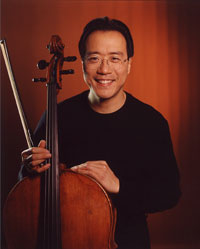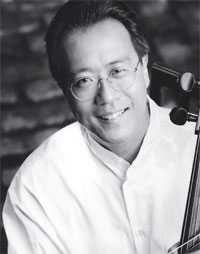Sony Music | Masterworks Store

 Loading, please wait...
Loading, please wait...New Releases
-
Bach: Partitas Nos. 1,...
Murray Perahia
Sony Classical
Rel. 1 Sep 2009
CDs: 1 Tracks: 20
Sample Album Track$9.99Haydn: Die Sinfonien
Tafelmusik Baroque Orchestra
Sony Classical
Rel. 18 Aug 2009
CDs: 7 Tracks: 84
Sample Album Track$34.99Mahler: Das Lied von d...
Montréal Symphony Orchestra, Kent Nagano
Sony Classical
Rel. 18 Aug 2009
CDs: 1 Tracks: 6
Sample Album Track$9.99 -
Mendelssohn-Bartholdy:...
Leonidas Kavakos
Sony Classical
Rel. 18 Aug 2009
CDs: 2 Tracks: 11
Sample Album Track$13.99Celebrating 70: A Coll...
James Galway
RCA Red Seal
Rel. 28 Jul 2009
CDs: 1 Tracks: 19
Sample Album Track$9.99Haydn: Die Schöpfung (...
New York Philharmonic, Leonard Bernstein
Sony Classical
Rel. 21 Jul 2009
CDs: 1 Tracks: 46
Sample Album Track$16.99
Special Collections: Horowitz Revisited
-
Horowitz In London
Vladimir Horowitz
RCA Gold Seal
Rel. 1 Sep 2009
CDs: 1 Tracks: 17
Sample Album Track$9.99Beethoven: Sonata in F...
Vladimir Horowitz
Living Stereo
Rel. 1 Sep 2009
CDs: 1 Tracks: 7
Sample Album Track$9.99Vladimir Horowitz at C...
Vladimir Horowitz
RCA Red Seal
Rel. 1 Sep 2009
CDs: 1 Tracks: 6
Sample Album Track$9.99 -
Horowitz: The Private ...
Vladimir Horowitz
RCA Red Seal
Rel. 1 Sep 2009
CDs: 1 Tracks: 21
Sample Album Track$9.99Historic Horowitz: Liv...
Vladimir Horowitz
Sony Classical
Rel. 1 Sep 2009
CDs: 1 Tracks: 28
Sample Album Track$11.99Vladimir Horowitz at C...
Vladimir Horowitz
Sony Classical
Rel. 30 Jun 2009
CDs: 1 Tracks: 18
Sample Album Track$9.99
Gems from the Masterworks Vault
-
Luciano Pavarotti in C...
Luciano Pavarotti
Sony Classical
Rel. 20 Sep 1988
CDs: 1 Tracks: 16
Sample Album Track$9.99Bernstein Conducts Ber...
New York Philharmonic, Leonard Bernstein
Sony Classical
Rel. 24 Feb 1987
CDs: 1 Tracks: 6
Sample Album Track$9.99
A Classical Archives Pre-Release Exclusive for Subscribers Only! Join Now, 14-Day Free Trial
Sony Masterworks generously presents a Pre-Release Exclusive to Classical Archives subscribers: the ability to stream (play) the new album by famed pianist Murray Perahia, performing J.S. Bach's Partitas 1, 2, and 5 prior to its official release on September 1st.
Murray Perahia
CDs: 1 Tracks: 20 Length: 1:09:24
Sony Classical
Available for purchase on September 1, 2009
|
|
||||
| 1 | 1.Praeludium | 1:56 | ||
| 2 | 2.Allemande | 3:07 | ||
| 3 | 3.Courante | 2:52 | ||
| 4 | 4.Sarabande | 5:02 | ||
| 5 | 5.Menuet 1 and 2 | 3:18 | ||
| 6 | 6.Gigue | 2:08 | ||
|
|
||||
| 7 | 1.Praeambulum | 2:15 | ||
| 8 | 2.Allemande | 4:30 | ||
| 9 | 3.Corrente | 1:43 | ||
| 10 | 4.Sarabande | 4:20 | ||
| 11 | 5.Tempo di minuetto | 2:01 | ||
| 12 | 6.Passepied | 1:44 | ||
| 13 | 7.Gigue | 3:55 | ||
|
|
||||
| 14 | 1.Toccata | 8:07 | ||
| 15 | 2.Allemande | 3:10 | ||
| 16 | 3.Corrente | 4:24 | ||
| 17 | 4.Air | 1:32 | ||
| 18 | 5.Sarabande | 5:33 | ||
| 19 | 6.Tempo di gavotta | 1:56 | ||
| 20 | 7.Gigue | 5:51 | ||
Liner Notes (excerpt)
The six Partitas or "six large suites with preludes", as they were originally described, were the first works the then forty year-old Bach published, giving them the proud designation "Opus 1". They appeared at the rate of one a year between 1725 and 1730, and were collected together in 1731 to form a single volume, to which he gave the title Clavier-Übung (literally Keyboard Practice). Bach went on to produce another three volumes of Clavier-Übungen, consisting of the Italian Concerto and Overture in the French Style, a set of mainly liturgical organ music and the Goldberg Variations respectively. The incomplete Art of Fugue would have formed volume five.
Partita No. 2 was published on 19 September 1727 and opens in grand style with imposing dotted rhythms familiar from the French overture as practiced by Jean-Baptiste Lully (1632-1687). Following this arresting call-to-arms, Bach proceeds with a two-part fugue of indomitable emotional thrust. Two-part counterpoint also forms the basis of the decidedly un-dance-like Allemande and Sarabande, although the latter retains its propensity for gently emphasizing the second beat of the bar. The Courante is more traditional in outline, although typically Bach can't resist inverting the main theme at the double bar. His imagination gains in virtuosic exuberance throughout the Rondeau with its downward leaps of a seventh, and the Capriccio's upward tenths in three-part counterpoint.
The Third Partita is one of the earliest of the set; it originally appeared, alongside No. 6, in the Klavierbüchlein of 1725, which Bach wrote specifically for his wife, Anna Magdalena. If in the Second Partita Bach contrasts passages of strict counterpoint with elements of free fantasia, here he creates emotional diversity by alternating the character of each succeeding movement. Following the opening "Fantasia! (whose contrapuntal precision belies the title), the poised Allemande and Sarabande are dramatically offset by the rather brusque-natured Courante and Burlesca. The robust Scherzo, a last-minute addition to the 1727 printed revision, is counterpoised by the Gigue's fugal inexorability.
While in the Second Partita, Bach subtly rethinks the generic template of the French overture, the Fourth (published in 1728 and arguably the grandest of the set) conforms more exactly to the model established in his orchestral suites, with its stately introduction characterized by dotted rhythms, followed by a fugal Allegro in triple time (in this case 9/8). To the expected Allemande and Sarabande, both disarmingly simple - the former amongst the most extended examples of its kind), Courante and Gigue (the latter announces two themes in succession and then ingeniously combines them), Bach adds an aria in the Italian style, as well as a Menuett with a touch of the French galant.
Excerpt from Liner Notes by Julian Haylock
From the Sony Masterworks recording:
Murray Perhia: Bach Partitas 1, 2, 5
Sony Masterworks proudly highlights the talents of among the most celebrated classical musicians of our time, cellist Yo-Yo Ma, whose many albums are featured here at the Classical Archives. We are please to present not only his many albums and a detailed biography – discussing his latest release, Songs of Joys and Peace, but also a music video of Yo-Yo Ma's performance of the Prelude from J.S. Bach's Cello Suite No.1 in G, BWV1007. Enjoy!

Yo-Yo Ma: Biography
For his latest album, Songs of Joy & Peace, the multiple Grammy®-winning cellist Yo-Yo Ma invited many of his favorite artists from the worlds of popular and classical music to collaborate on a selection of songs – some sacred, some secular, some traditionally seasonal, some simply beloved – connected in their sense of wonder and appreciation of the holiday season. Yo-Yo Ma conceived of Songs of Joy & Peace as a universal holiday house party of music "uniting different forms of joy" with the idea of combining familiar material with songs that would offer the listener the gift of discovery performed by old friends and new. Songs of Joy & Peace celebrates the universal hopes, dreams and good cheer animating seasonal festivals – Christmas, Hanukkah, Eid, Kwanzaa, Yuletide, Winter Solstice, New Year's, Ramadan – the world over.
Celebrating his 30th anniversary with Sony Classical and Sony Masterworks, Yo-Yo Ma is an exclusive Sony Classical artist, and his discography of over 75 albums (including 15 Grammy® Award winners) reflects his wide-ranging interests. He has made several successful recordings that defy categorization, among them Hush with Bobby McFerrin, Appalachia Waltz and Appalachian Journey with Mark O'Connor and Edgar Meyer and two Grammy®-winning tributes to the music of Brazil, Obrigado Brazil and Obrigado Brazil - Live in Concert. Yo-Yo Ma's most recent recordings include Paris: La Belle Époque, with pianist Kathryn Stott, Appassionato, which contains some of the world's most romantic music and New Impossibilities, a live album recorded with the Silk Road Ensemble and the Chicago Symphony Orchestra; he also appears on John Williams's soundtrack for Rob Marshall's film Memoirs of a Geisha. Across this full range of releases, Yo-Yo Ma remains one of the best-selling recording artists in the classical field. All of his recent albums have quickly entered the Billboard chart of classical best sellers, remaining in the Top 15 for extended periods, often with as many as four titles simultaneously on the list.

Yo-Yo Ma is strongly committed to educational programs that not only bring young audiences into contact with music but also allow them to participate in its creation. While touring, he takes time whenever possible to conduct master classes as well as more informal programs for students - musicians and non-musicians alike. At the same time he continues to develop new concert programs for family audiences (helping, for instance, to inaugurate the family series at Carnegie Hall). In each of these undertakings, he works to connect music to students' daily surroundings and activities with the goal of making music and creativity a vital part of children's lives from an early age. He has also reached young audiences through appearances on Arthur, Mister Rogers' Neighborhood and Sesame Street.
Yo-Yo Ma was born in 1955 to Chinese parents living in Paris. He began to study the cello with his father at age four and soon came with his family to New York, where he spent most of his formative years. Later, his principal teacher was Leonard Rose at the Juilliard School. He sought out a traditional liberal arts education to expand upon his conservatory training, graduating from Harvard University in 1976. He has received numerous awards, including the Avery Fisher Prize (1978), the Glenn Gould Prize (1999), the National Medal of the Arts (2001), the Dan David Prize (2006), the Sonning Prize (2006), and the World Economic Forum's Crystal Award (2008). Appointed a CultureConnect Ambassador by the United States Department of State in 2002, Yo-Yo Ma has met with, trained and mentored thousands of students worldwide including Lithuania, Korea, Lebanon, Azerbaijan and China. He has performed with and conducted master classes for members of the Iraqi National Symphony Orchestra. In 2006, Secretary General Kofi Annan named him a U.N. Messenger of Peace and in 2007 Secretary General Ban Ki-Moon extended his appointment.
More about Yo-Yo Ma
Yo-Yo Ma
Sony Classical
Rel. 29 Jul 2003
CDs: 1 Tracks: 16
Sample Album Track
A Classical Archives One-Click Concert™ for Subscribers Only! Join Now, 14-Day Free Trial
Sony Masterworks is pleased to offer a special One-Click Concert™ to subscribers of the Classical Archives, featuring outstanding recordings by Sony's roster of top-tier artists.
This special Sony Masterworks – Classical Archives One-Click™Concert features gems from the Romantic era, the period spanning roughly the duration of the 19th century.
The term "Romanticism" was first applied to trends in literature in the late 18th century, as an idealized revival of the Medieval "romance," and soon spread to its sister arts, painting and music. In each of these, the term embraces a belief in the power of human emotions, and especially in the vital expression of an artist's innermost "truths" - in defiance of the rule-bound traditions of the preceding age. In music history, the term generally refers to the period between Beethoven's maturity and the rise of the modernist trends of the early 20th century.
Our brief survey represents several of the most important musical trends of the era: the expansion of form and harmony in the instrumental works of Schubert and Dvořák; the love of the piano miniature, as epitomized in salon favorites of Schumann and Chopin; the fascination with instrumental virtuosity in concertos of Brahms and Grieg; the celebration of national or "folk" identity in a work of Tchaikovsky; the new realism of opera in arias by Bizet and Puccini, and finally the growing mannerism of subjective musical expression, as heard in Mahler's grand Symphony No.4, that in many ways signaled the exhaustion of the era - and which in turn opened the door to the new trends to come in the Modern era.
Presenting these masterworks are superb musicians from the Sony roster, including pianists Emmanuel Ax, Murray Perahia, Van Cliburn, and Vladimir Horowitz; vocalists Kiri Te Kanawa, Kathleen Battle, and Salvatore Licitra; conductors Valery Gergiev, Leonard Bernstein, Lorin Maazel, and Eugene Ormandy; and outstanding orchestras such as the New York Philharmonic, the Vienna Philharmonic, and the Philadelphia Orchestra. Enjoy!
| 1.Allegro vivace | 13:55 |
Album Only View Album 
|
||
Robert Alexander Schumann ComposerFantasy in C, Op.17 Work |
||||
| 1.Durchaus phantastisch und leidenschaftlich vorzutragen. Im Legendenton. Erstes Tempo | 12:19 |
Album Only View Album 
|
||
| Polonaise-fantaisie No.7 in Ab, Op.61 | 11:26 |
Album Only View Album 
|
||
| 1.Allegro non troppo | 23:57 |
Album Only View Album 
|
||
| 6.Au fond du temple saint | 3:46 | $1.29 | ||
| 11.Je crois entendre encore | 3:39 | $1.29 | ||
| Slavonic March (Marche Slave), Op.31 | 11:34 |
Album Only View Album 
|
||
| 2.Largo (containing theme 'Going Home') | 14:42 |
Album Only View Album 
|
||
Edvard Grieg ComposerPiano Concerto in A-, Op.16 Work |
||||
| 1.Allegro molto moderato | 13:00 |
Album Only View Album 
|
||
| 2.Un bel dì vedremo | 4:31 | $1.29 | ||
| 10.Tutti i fior (Flower duet) | 4:58 | $1.29 | ||
| 11.Coro a bocca chiusa (Humming Chorus) | 3:09 | $1.29 | ||
Gustav Mahler ComposerSymphony No.4 in G Work |
||||
| 4.Sehr behaglich: Wir genießen die himmlischen Freuden | 10:41 |
Album Only View Album 
|
||





























